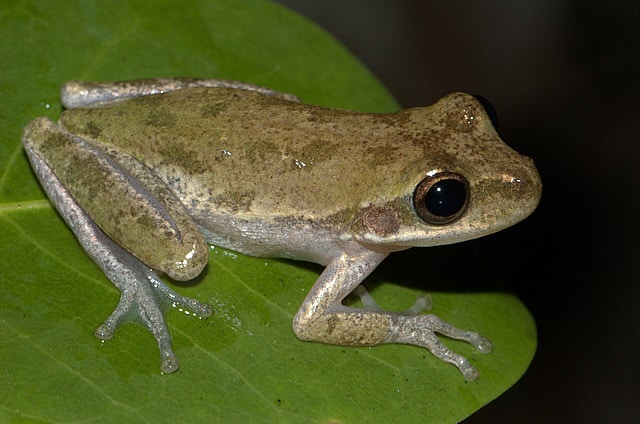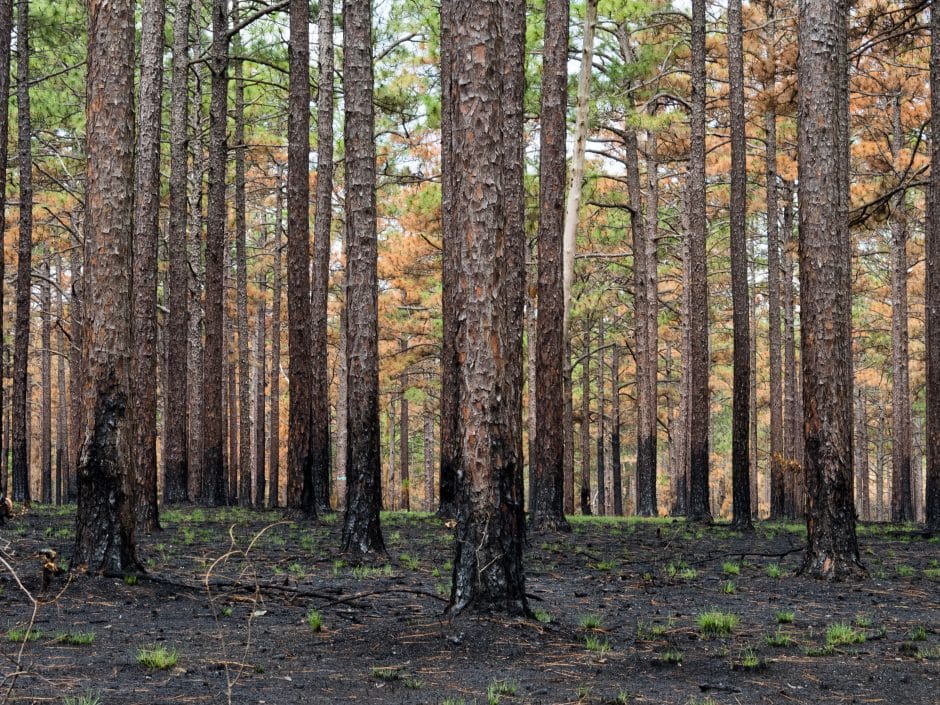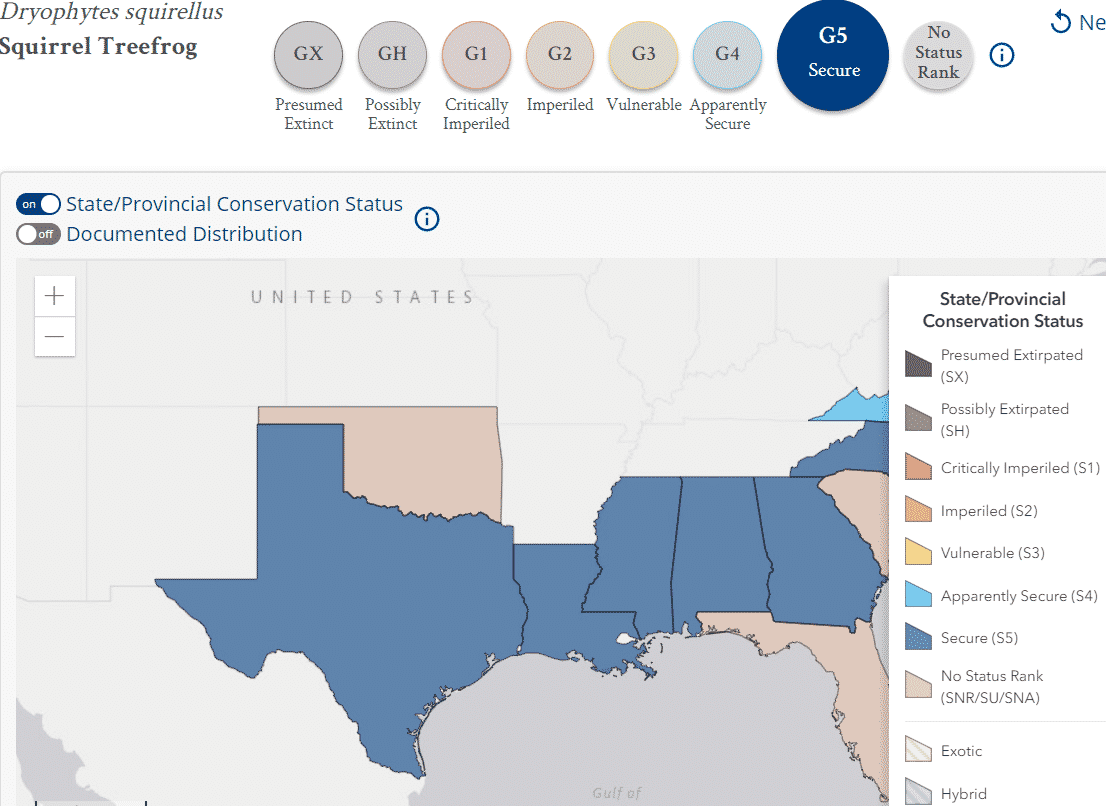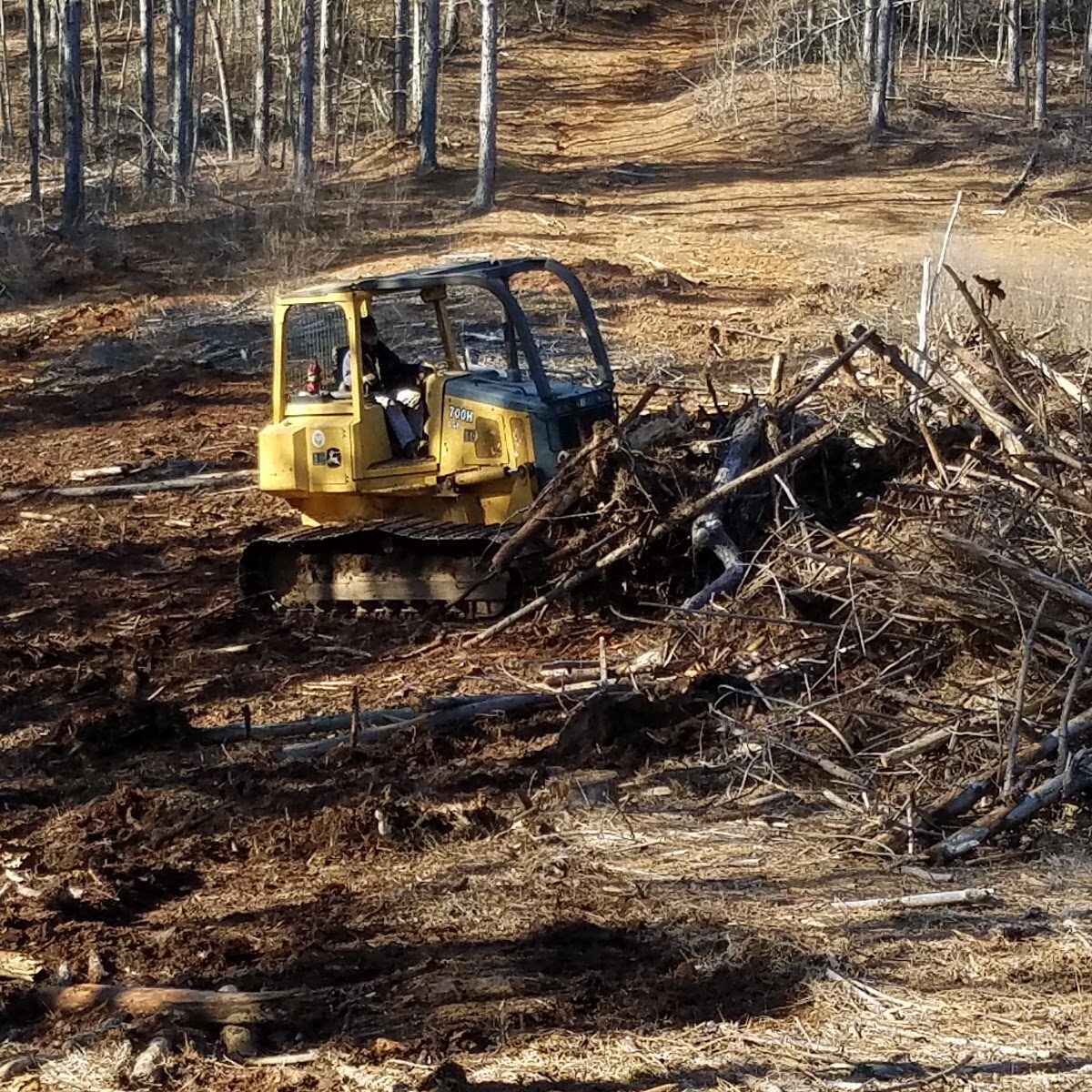Squirrel Treefrog
Hyla squirella
Status: Secure
Squirrel Treefrogs are small color changing frogs that are about 1 and half inches in length. The colors of the squirrel treefrogs change with their background just like a chameleon. Their colors can range from green to yellowish to brown and they can either be plain or have spots on their body. They also have a whitish yellow strip on their sides that set them apart from other tree frogs.


Habitat & Range
Squirrel tree frogs like moist areas like marshes, swamps, edges of lakes, and streams. They are also found in pine forest or open woodlands in shrubs, vines, and trees. Squirrel tree frogs are great climbers, hence their name. In the U.S. these frogs are often found in the southern states like Texas, Louisiana, Mississippi, Alabama, Georgia, Florida, North Carolina, South Carolina, and Virginia.
Food Web & Energy Flow
The diet of adult squirrel tree frogs are made up mostly of ants, beetles, spiders, and other insects. They are carnivores and also considered secondary consumers.
Relationship to Fire
Since the squirrel tree frogs are commonly found in grassy areas, they need fires to help clear some of the unwanted ground cover to help them find food. The fires also promote the growth of grass and with increased groundcover, there is also an increase in prey for the squirrel treefrogs.

Conservation Status
The overall conservation status for squirrel tree frogs is Secure. Although their population is not currently under any major threats, they are still experiencing habitat loss.

Human Impacts/ Threats

Land Use Conversion
Longleaf forests and the habitat it supports is being cleared or converted to use the land for other uses like houses, roads, agriculture, and even to grow different types of trees to sell.

Fire Suppression
Many people think of fires in the forest as bad, so they work hard to prevent or suppress them. But longleaf forests NEED regular fire to support habitat for the species that live there!
Resources
Savannah River Ecology Laboratory. Herpetology Program
Department of Wildlife & Ecology Conservation. Squirrel Treefrog
Amphibians & Reptiles of North Carolina. Squirrel Treefrog
